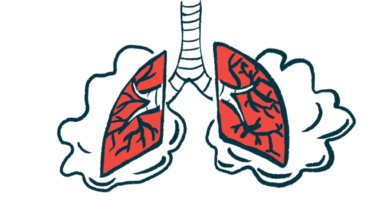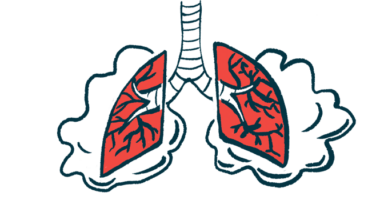CIRP protein ID’d as pulmonary hypertension marker in COPD
High protein levels also linked to disease severity in COPD-PH: Study

An inflammatory protein called CIRP may serve as a marker of pulmonary hypertension (PH) in people with chronic obstructive pulmonary disease (COPD), a chronic inflammatory disease of the lungs, a new study shows.
“Our study reveals elevated expression of [extracellular] CIRP in the lung tissue and [blood] of individuals with COPD-PH,” the scientists wrote.
According to the researchers, high levels of this protein may also indicate worse disease in patients.
“Further research identified a correlation between the levels of [extracellular] CIRP and the severity of COPD-PH,” the team wrote.
The study, “The extracellular CIRP as a predictive marker for the endothelial dysfunction in chronic obstructive pulmonary disease combined with pulmonary hypertension,” was published in the journal BMC Pulmonary Medicine.
Investigating link between CIRP and pulmonary hypertension in COPD
COPD is a chronic condition marked by inflammation in the lungs. In some people, this can lead to PH, where the blood pressure in the lungs’ vessels is abnormally high, putting strain on the heart.
The protein CIRP — fully known as cold-inducible RNA-binding protein — is normally kept inside cells. However, when cells become damaged, the protein gets released outside. This extracellular CIRP normally acts as a signal that something is wrong, prompting the immune system to kick into gear and launch an inflammatory attack to deal with the threat.
Emerging data has suggested that CIRP levels may be elevated in people with PH. Now, a team of scientists in China conducted a series of experiments to examine the relationship between CIRP and pulmonary hypertension in people with COPD.
The team first analyzed lung samples from 40 patients, including individuals who had COPD with or without PH, as well as people without COPD. The results showed that CIRP levels were elevated in COPD patients, but were especially high in individuals with COPD-related PH.
The scientists next tested blood samples from 150 people with COPD, 39 of whom had PH. In line with the lung tissue tests, these results showed that patients with PH had significantly higher levels of extracellular CIRP. Individuals with PH also had higher levels of certain inflammatory proteins and markers of blood vessel dysfunction, the researchers noted.
[These findings imply] a close association between [extracellular] CIRP and the progression as well as the prognosis of PH.
In statistical tests, the team found that patients with higher CIRP tended also to have more severe PH.
“This implies a close association between [extracellular] CIRP and the progression as well as the prognosis of PH,” the researchers wrote.
Tests also suggested that high CIRP levels could accurately detect nearly 95% of patients with COPD-related PH — though there were a lot of false-positives. Here, high CIRP levels accurately identified less than half of COPD patients who did not have PH.
Other statistical analyses indicated that higher CIRP levels were correlated with higher levels of inflammatory proteins and markers of dysfunction of the inner lining of blood vessels, known as the endothelium. This suggests that the extracellular CIRP level can “serve as a biomarker for predicting endothelial dysfunction in COPD-PH,” the researchers noted. According to the team, however, it’s unclear whether CIRP is a cause or consequence of endothelial dysfunction, which highlights a need for further investigations.
While this research sheds new light on COPD-PH, the researchers noted that “it is crucial to conduct extensive multicenter, prospective studies in order to establish a more robust foundation for clinical practices.”







